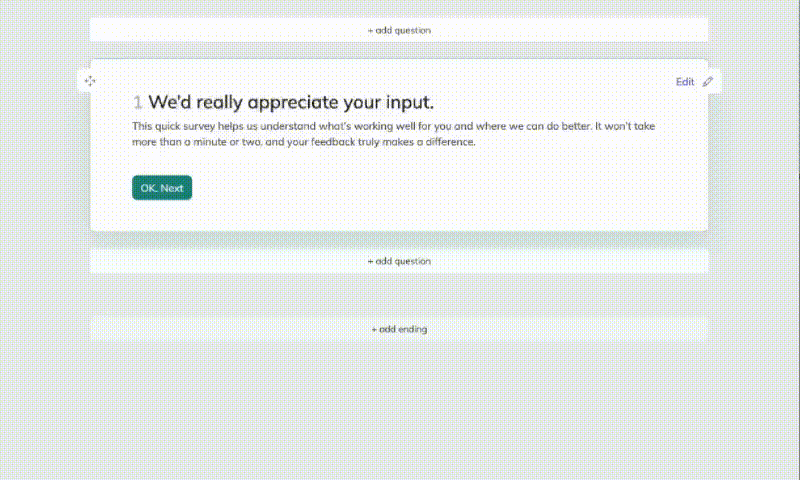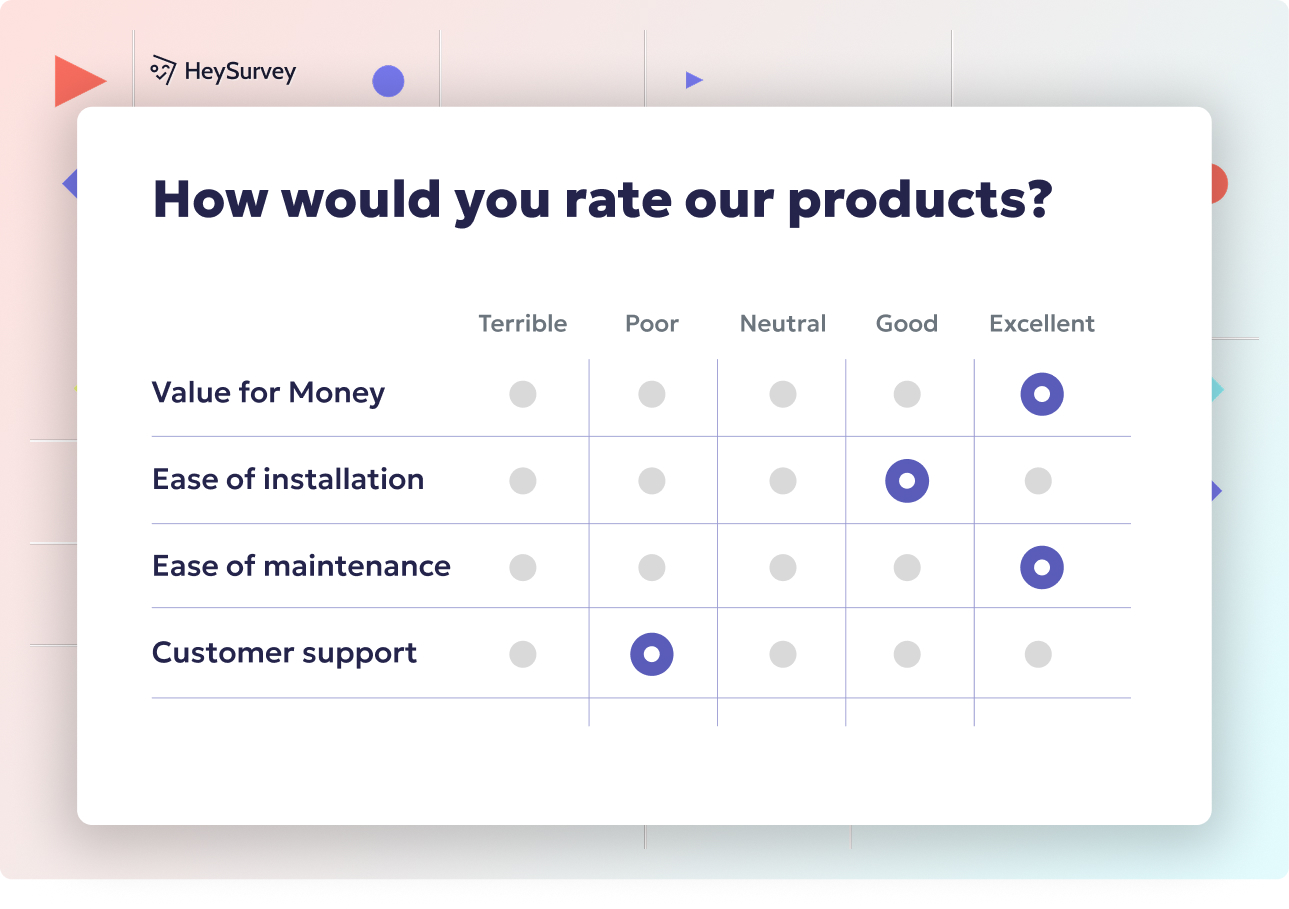20 Abortion Survey Questions for Comprehensive Insights
Explore a thorough guide featuring 25 sample abortion survey questions that uncover public attitudes, policy insights, healthcare access hurdles, and more.
Life can be surprising and nuanced, and abortion survey questions reflect that complexity. They help us see how policies, personal beliefs, and societal views intersect. Abortion surveys offer essential insights into healthcare accessibility, cultural norms, and the ethical landscape that shapes people’s opinions and experiences. They also guide educational initiatives and help policymakers respond to changing public needs.
In a 2022 national survey, 64% of participants admitted confusion about abortion regulations in their state. Source
Key Reasons for Conducting Abortion Surveys
Abortion is often wrapped in sensitivity and diverse beliefs. Surveys uncover levels of awareness, highlight overlooked barriers, and shape interventions that meet real needs. Using abortion surveys effectively means approaching the topic with an open mind and a willingness to capture varied perspectives in a fair way.
A 2021 pilot study showed that well-designed abortion surveys improved the accuracy of reported attitudes by 23%. Source
Surveys can focus on societal attitudes, policy preferences, or healthcare experiences. They help bridge gaps between public concerns and official action. Clear survey design ensures accurate data that can guide solutions and spark honest conversations.
Policymakers, advocacy groups, and healthcare providers use the results to evaluate what people want and need. Thoughtful abortion questions help direct funding, create informative campaigns, and set up comprehensive care. By asking the right things, surveys become tools for positive change.

Attitude & Opinion Surveys
Why and When to Use This Survey Type
People have varying opinions about abortion shaped by family influence, personal values, or media coverage. Attitude & opinion surveys illuminate how strongly people feel and why they support or oppose abortion rights. These surveys are used when researchers want to map shifting sentiments or understand why misconceptions may persist.
They also help identify the emotional climate surrounding abortion and uncover patterns that could guide awareness programs. Gaining clarity on existing mindsets is crucial when planning advocacy efforts or policy reform. Attitude surveys can be done anytime a group wants to gauge public backing or resistance.
5 Sample Questions
- How strongly do you agree or disagree that abortion should be widely accessible.
- What most influences your perspective on abortion (media, religion, personal experience, etc.).
- How comfortable do you feel discussing abortion with acquaintances.
- How important is bodily autonomy to your viewpoint on abortion.
- Should personal beliefs or medical data play a greater role in policy decisions.
Create your survey, it's 100% free
Create a new survey.
You’re already on the HeySurvey website, so simply click the option to “Start a new survey.” If you’d like a head start, select the “Abortion Survey Template” from the templates list. Or, you can begin with a blank survey if you prefer to build everything from scratch. Look for the button below these instructions to open the template.Add questions.
In the survey editor, click “Add Question” to introduce each question you want to ask. Because this is an abortion-focused survey, consider using a combination of multiple-choice, open-response, and scale questions. Adjust settings like mandatory responses, branching rules, or question descriptions to craft a well-rounded, engaging survey.Publish your survey.
Once your survey is ready, preview it to confirm that instructions and questions flow logically. Then click “Publish” to officially launch it. You’ll receive a shareable link for respondents to access. If you haven’t created an account yet, you’ll be prompted to do so in order to publish and collect data.
Bonus Steps:
• Apply branding and themes. Personalize your survey by uploading a logo and choosing a color scheme.
• Define settings. Adjust the start/end date, response limit, or redirect URL under “Settings.”
• Skip into branches. Set up branching to show or hide questions based on previous answers, ensuring a more relevant experience for each respondent.
Knowledge & Awareness Surveys
Why and When to Use This Survey Type
Sometimes, strong opinions about abortion come from limited information or myths. Knowledge & awareness surveys highlight how aware people are of medical procedures, legal frameworks, and safety concerns. They’re particularly useful when launching public education initiatives or assessing how transparent healthcare information is.
When misinformation spreads, it can lead to fear or stigma. Building accurate knowledge involves identifying where education gaps exist. By discovering how much people already understand, you can tailor campaigns to ensure that factual information reaches the right audiences.
5 Sample Questions
- Are you aware of the current legal permissions for abortion where you live.
- How well do you understand the difference between medical and surgical abortion methods.
- Have you encountered conflicting information regarding abortion safety.
- Do you know of any reliable resources for up-to-date abortion facts.
- How confident would you feel explaining abortion procedures to a friend seeking help.
Healthcare Access & Barriers Surveys
Why and When to Use This Survey Type
Even in places where abortion is legal, realities on the ground vary. Healthcare access & barriers surveys expose if cost, geographic distance, or stigma impacts where and how people seek help. These surveys are carried out when you want to see if hospitals, clinics, or telehealth services meet the needs of individuals.
They also identify the forces that stop people from seeking or completing necessary procedures. Locating barriers helps healthcare systems fix gaps, while also directing reforms so that patients can find the right support. This type of data is especially useful for nonprofits and health departments aiming to offer better care.
5 Sample Questions
- How easy or difficult is it to locate an abortion provider in your region.
- What is the greatest challenge you face when seeking reproductive healthcare.
- Have you ever felt judged or discriminated against during a healthcare visit.
- Do you believe financial assistance should be offered for abortion services.
- How does travel distance to clinics influence your decision to access care.

Policy & Legislative Preference Surveys
Why and When to Use This Survey Type
Policy changes can transform the legal status of abortion. Policy & legislative preference surveys uncover whether people favor stricter regulations or want to expand safe options. They’re usually conducted around election seasons, during debates on new laws, or after a major court ruling.
Research in 2020 found that 56% of respondents shifted their stance on abortion policy after learning about different legislative approaches. Source
Policymakers can review these results to craft regulations that resonate with community sentiments. Reflecting real public preference ensures that laws aren’t disconnected from the needs of those most affected. Advocacy groups also use these surveys to tailor campaigns and show evidence of where the public stands on policy measures.
5 Sample Questions
- Do you support new legislation that would broaden access to abortion services.
- Should government funds be allocated to support abortion procedures in low-income areas.
- Do you agree with mandatory counseling or waiting periods before receiving an abortion.
- Should individual states have full authority to determine abortion legality.
- Does your voting behavior change based on a candidate’s abortion stance.
Ethical & Moral Perspective Surveys
Why and When to Use This Survey Type
For many, abortion discussions touch moral or spiritual beliefs. Ethical & moral perspective surveys delve into the values that guide personal stances on abortion. These surveys typically happen in community settings, at conferences, or for in-depth research studies that want to understand deep-seated convictions.
When you want to explore how principles shape policy preferences or personal behavior, this is the type to use. Examining moral convictions helps highlight the role that cultural norms, religious teachings, or life philosophy play in shaping the conversation. Researchers and community leaders rely on this data to bridge divides.
5 Sample Questions
- What moral framework guides your views on abortion rights and limitations.
- Do you believe certain situations ethically justify abortion more than others.
- How significant is religious doctrine in shaping your stance on reproductive autonomy.
- Should moral considerations override legal permissions in deciding about an abortion.
- Is it acceptable to mix religious and political approaches to abortion policymaking.

Social Stigma & Cultural Norms Surveys
Why and When to Use This Survey Type
Stigma can arise from social prejudice, media portrayals, or cultural taboos. Social stigma & cultural norms surveys reveal how these attitudes form and the effect they have on people seeking abortions. They’re particularly relevant when moving forward with community-based projects aiming to reduce judgment or emboldening those who experience shame.
Such surveys provide clarity on how beliefs about abortion intersect with broader cultural dynamics, revealing the stories, rumors, and judgments that shape public understanding. Spotting those cultural biases helps experts develop educational workshops that promote empathy, dispel myths, and encourage supportive dialogues.
5 Sample Questions
- Is abortion openly discussed or considered taboo in your community.
- How do media reports in your region shape public perceptions of abortion.
- Have you witnessed someone being stigmatized after choosing an abortion.
- What changes would help reduce cultural bias surrounding reproductive choices.
- Are people more willing to share experiences about abortion now than in the past.
Demographic & Cross-Cultural Surveys
Why and When to Use This Survey Type
Reproductive decisions don’t happen in a vacuum; they’re influenced by age, cultural background, and other identity markers. Demographic & cross-cultural surveys identify how key factors, like ethnicity or socio-economic status, shape opinions. These surveys are most effective when organizations strive for inclusive services and want to spot inequalities.
Highlighting patterns helps policymakers and healthcare providers offer care that’s fair to every population group. Respecting demographic differences means shaping programs that empower communities and reflect their distinct needs. These insights can also prevent one-size-fits-all policies that fail to address deeper disparities.
5 Sample Questions
- Which demographic factors appear most significant in influencing abortion perspectives.
- Does your cultural background generally align with or oppose the right to choose abortion.
- Have you noticed generational differences that shape attitudes to reproductive rights.
- How do family structures in your culture respond to discussing abortion.
- What would a fully inclusive abortion education campaign look like in your community.
Post-Procedure Feedback Surveys
Why and When to Use This Survey Type
Women and others who have undergone abortions carry stories that can improve service delivery. Post-procedure feedback surveys capture real experiences from those who engaged with the healthcare system. They’re done by clinics, research institutions, or nonprofits to refine counseling and aftercare services.
This feedback can also highlight supportive or judgmental behaviors from staff. Improving patient experience begins with listening to the accounts of individuals who navigated the system. Gathering these stories helps identify best practices and potential training topics for healthcare professionals.
5 Sample Questions
- How would you describe the quality of counseling prior to your procedure.
- Did you feel you received nonjudgmental care from medical staff.
- Were emotional and psychological support resources readily available.
- What aspect of your visit needs the most improvement.
- Would you recommend this clinic or provider to someone considering an abortion.
Best Practices for Crafting Abortion Survey Questions
Clarity ensures efficient data gathering and user-friendly experiences. Clear question structure helps avoid confusion that skews results. When survey participants fully grasp your questions and their purpose, they’re more likely to respond honestly.
Respectful language prevents alienation and fosters trust. Respect for respondents includes using unbiased words, avoiding harmful assumptions, and ensuring anonymity. Providing context or definitions for complex points can also improve answer quality.
Neutral phrasing matters if you want data that truly reflects public opinion. Maintaining neutrality prevents your own biases from seeping into the survey. Avoid emotional or leading terms that might steer participants toward a specific viewpoint.
Dos and Don’ts for Abortion Survey Implementation
Dos
• Obtain proper consent and explain the survey’s purpose.
• Pilot your questions to see if they’re easy to understand.
• Provide emotional support resources where sensitive questions arise.
• Allow space for open-ended answers if possible.
• Keep the wording simple and respectful.
Don’ts
• Include judgmental language or loaded statements.
• Ask invasive questions without a guarantee of privacy.
• Disregard negative comments or complaints that can shape improvements.
• Overwhelm respondents with excessive detail or lengthy queries.
• Ignore cultural nuances that may demand careful phrasing.
Conclusion
Abortion surveys are a window into public perspectives. They reveal people’s needs and inform meaningful change. Through thoughtful questions, insights emerge that can guide policy, education, and care. The data gathered paves the way for positive developments in healthcare and community dialogue. Ultimately, these surveys bridge gaps and empower everyone involved.